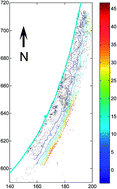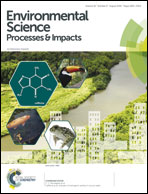Interpolation of extensive routine water pollution monitoring datasets: methodology and discussion of implications for aquifer management
Abstract
A large fraction of the fresh water available for human use is stored in groundwater aquifers. Since human activities such as mining, agriculture, industry and urbanisation often result in incursion of various pollutants to groundwater, routine monitoring of water quality is an indispensable component of judicious aquifer management. Unfortunately, groundwater pollution monitoring is expensive and usually cannot cover an aquifer with the spatial resolution necessary for making adequate management decisions. Interpolation of monitoring data is thus an important tool for supplementing monitoring observations. However, interpolating routine groundwater pollution data poses a special problem due to the nature of the observations. The data from a producing aquifer usually includes many zero pollution concentration values from the clean parts of the aquifer but may span a wide range of values (up to a few orders of magnitude) in the polluted areas. This manuscript presents a methodology that can cope with such datasets and use them to produce maps that present the pollution plumes but also delineates the clean areas that are fit for production. A method for assessing the quality of mapping in a way which is suitable to the data's dynamic range of values is also presented. A local variant of inverse distance weighting is employed to interpolate the data. Inclusion zones around the interpolation points ensure that only relevant observations contribute to each interpolated concentration. Using inclusion zones improves the accuracy of the mapping but results in interpolation grid points which are not assigned a value. The inherent trade-off between the interpolation accuracy and coverage is demonstrated using both circular and elliptical inclusion zones. A leave-one-out cross testing is used to assess and compare the performance of the interpolations. The methodology is demonstrated using groundwater pollution monitoring data from the coastal aquifer along the Israeli shoreline. The implications for aquifer management are discussed.


 Please wait while we load your content...
Please wait while we load your content...